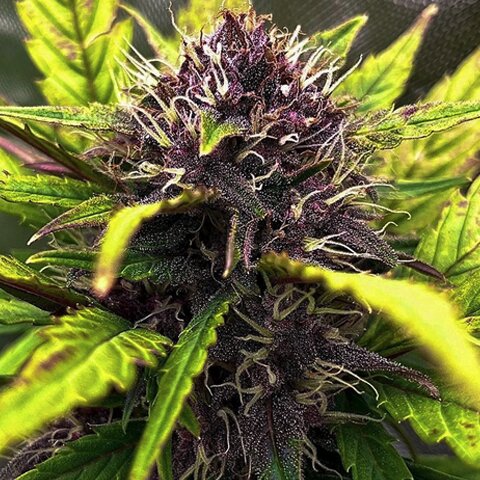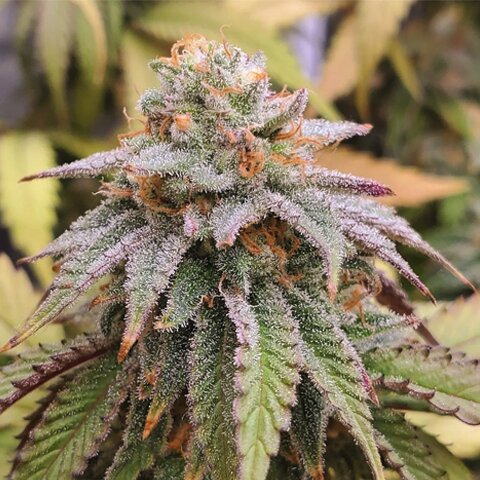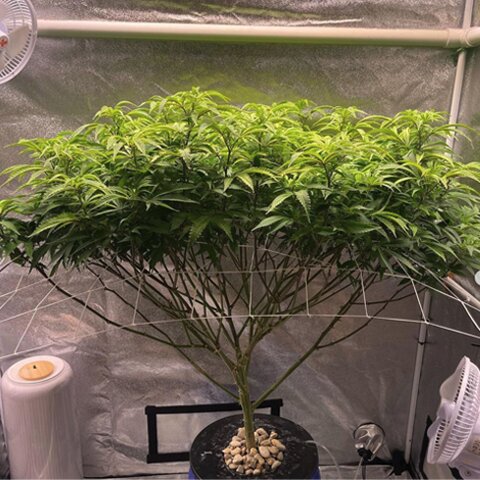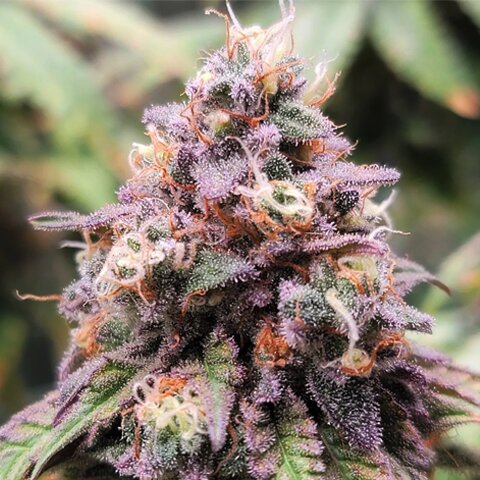Soil Cannabis Feeding Schedule
FEEDING SCHEDULE - TEASPOONS/GALLON
SOIL APPLICATIONS
WELL-ROOTED CLONES OR SEEDLINGS |
VEGETATIVE STAGE |
FLOWER STAGE |
||||||||||||
|---|---|---|---|---|---|---|---|---|---|---|---|---|---|---|
|
Week1 |
Week2 |
Week1 |
Week2 |
Week3 |
Week4* |
Week1 |
Week2 |
Week3 |
Week4 |
Week5 |
Week6 |
Week7 |
Week8** |
|
|
EC (mS/cm) |
0.9EC |
0.9EC |
1.8EC |
1.8EC |
2.2EC |
2.4EC |
2.3EC |
2.6EC |
2.6EC |
2.8EC |
2.8EC |
2.8EC |
2.1EC |
0.3EC |
|
PPM (500 scale) |
430 ppm |
430 ppm |
900 ppm |
900 ppm |
1100 ppm |
1200 ppm |
1150 ppm |
1300 ppm |
1300 ppm |
1400 ppm |
1400 ppm |
1400 ppm |
1050 ppm |
140 ppm |
|
GROW Powder |
0.75 tsp |
0.75 tsp |
1.5 tsp |
1.5 tsp |
1.75 tsp |
2.0 tsp |
0.75 tsp |
|||||||
|
CAL/MAG Powder |
0.5 tsp |
0.5 tsp |
0.5 tsp |
0.5 tsp |
||||||||||
|
BLOOM Powder |
1.0 tsp |
1.25 tsp |
1.5 tsp |
1.5 tsp |
1.5 tsp |
1.5 tsp |
1.5 tsp |
|||||||
|
BOOST Powder |
0.5 tsp 3.5g |
0.5 tsp 3.5g |
0.5 tsp 3.5g |
0.5 tsp 3.5g |
0.5 tsp 3.5g |
|||||||||
|
CARBOFLUSH Powder |
0.75 tsp 2.3g |
0.75 tsp 2.3g |
||||||||||||
Parts per million (ppm) values are calculated on base water treated with a reverse osmosis filter at 0ppm.
*For extended VEG cycles, repeat week 4 of VEG table.
**For extended Flower cycles, repeat week 6 of the Flower chart for any additional weeks added, making sure to follow week 7 and 8 the final two weeks of Flower.
NOTE:
For light feeding plants/gardens with lower light intensity/no CO2- Adjust down as much as 30%
For heavy feeding plants/high light intensity rooms/high CO2- Adjust up as much as 20%
Hydroponic Cannabis Feeding Schedule
FEEDING SCHEDULE - TEASPOONS/GALLON
DWC/RECIRCULATING
WELL-ROOTED CLONES OR SEEDLINGS |
VEGETATIVE STAGE |
FLOWER STAGE |
||||||||||||
|---|---|---|---|---|---|---|---|---|---|---|---|---|---|---|
|
Week1 |
Week2 |
Week1 |
Week2 |
Week3 |
Week4* |
Week1 |
Week2 |
Week3 |
Week4 |
Week5 |
Week6 |
Week7 |
Week8** |
|
|
EC (mS/cm) |
1.3 EC |
1.4 EC |
1.9 EC |
2.0 EC |
2.2 EC |
2.3 EC |
2.1 EC |
2.2 EC |
2.2 EC |
2.4 EC |
2.4 EC |
2.4 EC |
1.8 EC |
1.2 EC |
|
PPM (500 scale) |
600 ppm |
720 ppm |
950 ppm |
1000 ppm |
1100 ppm |
1150 ppm |
1050 ppm |
1100 ppm |
1100 ppm |
1200 ppm |
1200 ppm |
1200 ppm |
900 ppm |
600 ppm |
|
GROW Powder |
1.0 tsp |
1.2 tsp |
1.25 tsp |
1.5 tsp |
1.5 tsp |
1.75 tsp |
0.75 tsp |
|||||||
|
CAL/MAG Powder |
0.25 tsp |
0.25 tsp |
0.25 tsp |
0.25 tsp |
0.25 tsp |
0.25 tsp |
0.25 tsp |
0.25 tsp |
0.25 tsp |
0.25 tsp |
||||
|
BLOOM Powder |
1.0 tsp |
1.25 tsp |
1.25 tsp |
1.5 tsp |
1.5 tsp |
1.5 tsp |
1.5 tsp |
0.75 tsp |
||||||
|
BOOST Powder |
0.25 tsp |
0.25 tsp |
0.25 tsp |
0.25 tsp |
0.25 tsp |
|||||||||
|
CARBOFLUSH Powder |
0.75 tsp |
0.75 tsp |
||||||||||||
Parts per million (ppm) values are calculated on base water treated with a reverse osmosis filter at 0ppm.
*For extended VEG cycles, repeat week 4 of VEG table.
**For extended Flower cycles, repeat week 6 of the Flower chart for any additional weeks added, making sure to follow week 7 and 8 the final two weeks of Flower.
NOTE:
For light feeding plants/gardens with lower light intensity/no CO2- Adjust down as much as 30%
For heavy feeding plants/high light intensity rooms/high CO2- Adjust up as much as 20%
Coco Coir Cannabis Feeding Schedule
FEEDING SCHEDULE - TEASPOONS/GALLON
COCO/DRAIN TO WASTE/HIGH FREQUENCY FERTIGATION
WELL-ROOTED CLONES OR SEEDLINGS |
VEGETATIVE STAGE |
FLOWER STAGE |
||||||||||||
|---|---|---|---|---|---|---|---|---|---|---|---|---|---|---|
|
Week1 |
Week2 |
Week1 |
Week2 |
Week3 |
Week4* |
Week1 |
Week2 |
Week3 |
Week4 |
Week5 |
Week6 |
Week7 |
Week8** |
|
|
EC (mS/cm) |
1.6 EC |
1.6 EC |
2.0 EC |
2.0 EC |
2.4 EC |
2.8 EC |
2.4 EC |
2.6 EC |
2.8 EC |
3.0 EC |
3.3 EC |
3.3 EC |
2.4 EC |
1.1 EC |
|
PPM (500 scale) |
800 ppm |
800 ppm |
1000 ppm |
1000 ppm |
1200 ppm |
1400 ppm |
1200 ppm |
1300 ppm |
1400 ppm |
1500 ppm |
1650 ppm |
1650 ppm |
1200 ppm |
550 ppm |
|
GROW Powder |
1.25 tsp |
1.25 tsp |
1.5 tsp |
1.5 tsp |
1.75 tsp |
2.0 tsp |
0.75 tsp |
|||||||
|
CAL/MAG Powder |
0.25 tsp |
0.25 tsp |
0.5 tsp |
0.5 tsp |
0.5 tsp |
0.5 tsp |
0.5 tsp |
0.5 tsp |
0.5 tsp |
0.5 tsp |
0.5 tsp |
0.5 tsp |
0.25 tsp |
|
|
BLOOM Powder |
1.0 tsp |
1.25 tsp |
1.25 tsp |
1.5 tsp |
1.5 tsp |
1.5 tsp |
1.25 tsp |
0.75 tsp |
||||||
|
BOOST Powder |
0.5 tsp |
0.5 tsp |
0.5 tsp |
0.75 tsp |
0.75 tsp |
|||||||||
|
CARBOFLUSH Powder |
0.75 tsp |
1.0 tsp |
||||||||||||
Parts per million (ppm) values are calculated on base water treated with a reverse osmosis filter at 0ppm.
*For extended VEG cycles, repeat week 4 of VEG table.
**For extended Flower cycles, repeat week 6 of the Flower chart for any additional weeks added, making sure to follow week 7 and 8 the final two weeks of Flower.
NOTE:
For light feeding plants/gardens with lower light intensity/no CO2- Adjust down as much as 30%
For heavy feeding plants/high light intensity rooms/high CO2- Adjust up as much as 20%




Cannabis Feeding Schedule
As a cannabis grower, it's essential to understand the cannabis feeding schedule and how to nourish your plants throughout their growth cycle properly. A customized feeding schedule ensures that your plants get the proper nutrients at the right time.
When growing cannabis, there are three main stages of growth: vegetative, flowering, and ripening. Each step requires a different nutrient mix and quantity.
The vegetative stage is when the plants grow leaves and stems. During this stage, they need a high nitrogen level to support growth. Next, the flowering stage is when the plants produce buds. During this stage, they need a higher level of phosphorus and potassium to support bud development. Finally, the ripening stage is when the plants are maturing their buds. During this stage, they need a higher level of calcium and magnesium to support bud maturity.
To ensure that your plants get the proper nutrients at the right time, following a customized feeding schedule is essential. This will vary depending on the type of cannabis you're growing, your growing environment, and your personal preferences. However, there are some general guidelines that you can follow.
For example, you should feed your plants once a week with a nutrient-rich water solution during the vegetative stage. It would help if you provided your plants twice a week with a nutrient-rich water solution during the flowering stage. And during the ripening stage, you should feed your plants once a week with calcium and magnesium-rich water solution.
It's also essential to monitor the pH level of your nutrient solutions throughout the growth cycle. The ideal range for cannabis is 6.0-7.0.
By following these general guidelines and tailoring them to your specific grow operation, you can ensure that your plants get the nutrients they need at each growth stage. This will result in healthier plants and bigger yields.
Why Grow Marijuana in Soil?
Soil is one of the most popular mediums for growing cannabis. It's inexpensive, easy to find, and easy to use. Plus, it gives your plants a good foundation for healthy growth.
Using a Feed Chart
When growing cannabis in soil, it's essential to use a feed chart to ensure your plants are getting the proper nutrients. A feed chart will tell you how much of each nutrient your plants need at different stages of their growth.
Determine the Right Amount of Nutrients
The number of nutrients your cannabis plants need will depend on several factors, including the type of soil you're using and the growth stage your plants are in.
The Ideal Cannabis Feeding Schedule for Marijuana Plants Grown in Soil
For marijuana plants to thrive, they need the right amount of light, carbon dioxide, and water. They also need the right nutrient mixture and an ideal cannabis feeding schedule by their growth stage.
As the plants grow, they need more sustenance to support their growth. Thus, larger doses of nutrients are administered during the vegetative stage. Once the plant starts flowering, the amount of nutrients is reduced to help the plant focus its energy on producing buds.
The following is a cannabis feeding schedule that you can use as a guide:
- during the vegetative stage, your plants will need a lot of nitrogen-rich nutrients to support their growth. So give them a high-nitrogen fertilizer every other week.
- during the flowering stage, your plants will need fewer nitrogen-rich nutrients and more phosphorus- and potassium-rich nutrients. So give them a low-nitrogen fertilizer every other week.
- during the last two weeks of the flowering stage, stop giving your plants any fertilizers. This will help prevent the buds from tasting too "green."
Remember, these are just guidelines. The number of nutrients your plants need will depend on factors such as the type of soil you're using and the growth stage your plants are in. So be sure to adjust the number of nutrients you give your plants.
Happy growing!
